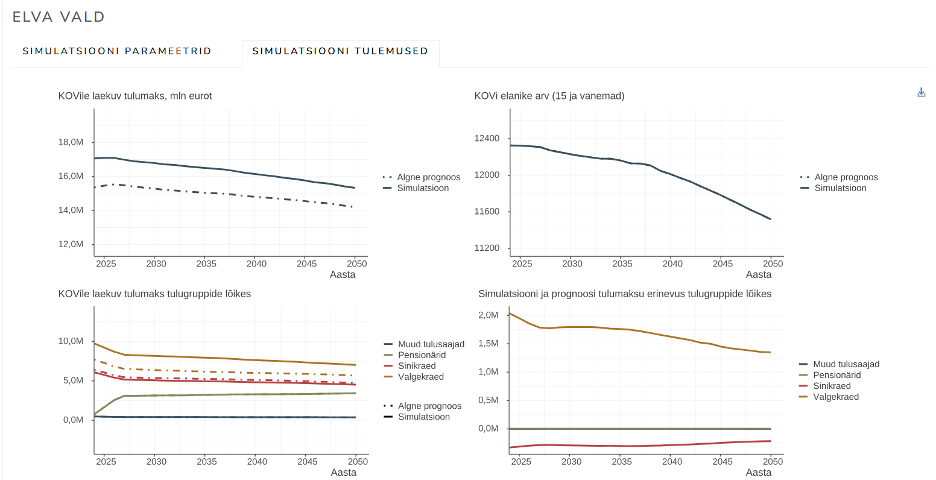A digital tool for estimating and simulating local government tax revenue
25 March 2025

Recent crises such as refugees and migration, climate change, the pandemic, and the shortage of affordable housing, have significantly altered residential mobility patterns in Estonia. These shifts have made it increasingly challenging for local governments to plan for future revenue and public service provision adding a layer of uncertainty to fiscal sustainability and governance of territories.
To help municipalities navigate this challenge, the MULTILOCAL Lab has developed a prototype tool that integrates demographic forecasting with income-based tax modelling. This digital solution enables municipalities to predict and simulate income tax revenue, fostering evidence-based policymaking and long-term financial planning.
The tool was built by the MULTILOCAL study team, including inputs from the different workshops held with local and regional stakeholders. During the workshops, participants discussed residential patterns and mobility trends using Foresight, applying factor analysis and creating future scenarios, providing unique insights for the tool design.
How the tool works
The proposed tool merges key demographic and economic factors that shape municipal tax revenue. It relies on population projections spanning from 2024 to 2050, drawing on age- and gender-specific forecasts. Additionally, income profiles are derived from administrative data sources, including the Population Register and the Tax and Customs Board. Macroeconomic assumptions, such as GDP and wage growth projections from the Ministry of Finance, further refine the estimates.
To provide a realistic revenue model, taxpayers are categorized based on their primary income source. Employed workers are divided into blue-collar and white-collar professionals, while other income recipients—such as those on parental benefits—and pensioners are also accounted for. By analysing the distribution of these taxpayer groups across different age groups and their respective average taxable incomes, the tool constructs a detailed income profile for each municipality.
Estimating tax revenue
The tool employs a structured approach to estimate municipal tax revenue. First, it segments the population into different age groups based on demographic forecasts. Then, historical data is used to determine the proportion of taxpayers within each group and categorise them by income type. By applying average income levels, the tool calculates total taxable income, which is then subjected to municipal tax rates. Finally, these figures are aggregated to generate a comprehensive projection of total municipal tax revenue.
Simulation capabilities
Beyond baseline projections, the tool allows municipalities to explore different policy scenarios. It can simulate changes in workforce composition, shifts in workforce participation, varying wage growth rates, and demographic changes driven by migration patterns. For example, if a municipality like Elva aims to increase the share of white-collar workers among young residents from 32–33% to 50%, the tool can estimate the corresponding impact on income tax revenue, projecting an increase of approximately 1.6 million euros.

A tool for smarter territorial planning
By integrating demographic forecasts, income distributions, and macroeconomic trends, this digital tool offers municipalities a structured framework for understanding how economic and population changes influence tax revenue and enable local governments to make informed policy decisions.
Long-term financial planning is crucial for societal resilience as it enables governments and communities to anticipate, adapt to, and recover from economic and social disruptions. When municipalities have a clear understanding of future revenue streams and expenditure needs, they can allocate resources efficiently to maintain essential services such as healthcare, education, housing, and infrastructure. This facilitates that communities remain functional and well-supported, even in times of crisis, reduces public financial uncertainty and enhances the ability of local governments to respond proactively to demographic and economic shifts.
Discover the tool: https://apps.centar.ee/kov-tulumaks/
Login to add a new comment